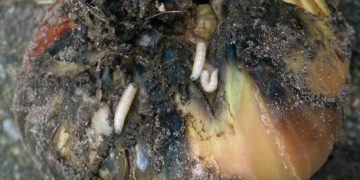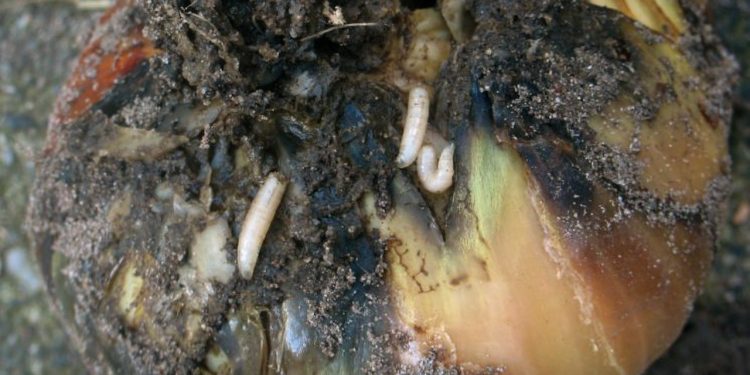Onion maggots (Delia antiqua) are one of the most damaging pests for onion crops. They are small, white, legless larvae that feed on onion roots, causing stunted growth, yellowing, and even death of the plant. The economic impact of onion maggots is significant, as onion crops are a major industry in many regions around the world.
#PestControl #OnionIndustry #SustainableFarming #CropRotation #IPM #BiologicalControl #AttractAndKillTraps #EnvironmentalImpact #Pesticides #OnionRoots
The development of onion maggots begins in the soil, where the female flies lay their eggs in the fall. The larvae hatch and feed on the onion roots throughout the winter, causing damage that can affect the entire crop. In the spring, the maggots pupate in the soil, and emerge as adult flies in the summer. The cycle then repeats, with the new flies laying eggs for the next generation.
One consequence of the development of onion maggots is the increased use of pesticides to control the pest. This can have negative effects on the environment, as well as the health of workers and consumers. Integrated pest management (IPM) strategies, such as crop rotation and the use of insect-resistant onion varieties, can help reduce the use of pesticides and the impact of onion maggots on onion production.
In addition to IPM strategies, research is also being conducted to develop new methods for controlling onion maggots, such as the use of biological control agents and attract-and-kill traps. These methods have the potential to be more sustainable and effective than traditional pesticide-based approaches.
In conclusion, onion maggots are a significant threat to onion production, but there are ways to mitigate their impact through the use of IPM strategies and the development of new pest control methods. By working together, growers, researchers, and policymakers can help protect onion crops and ensure a sustainable future for the onion industry.


































